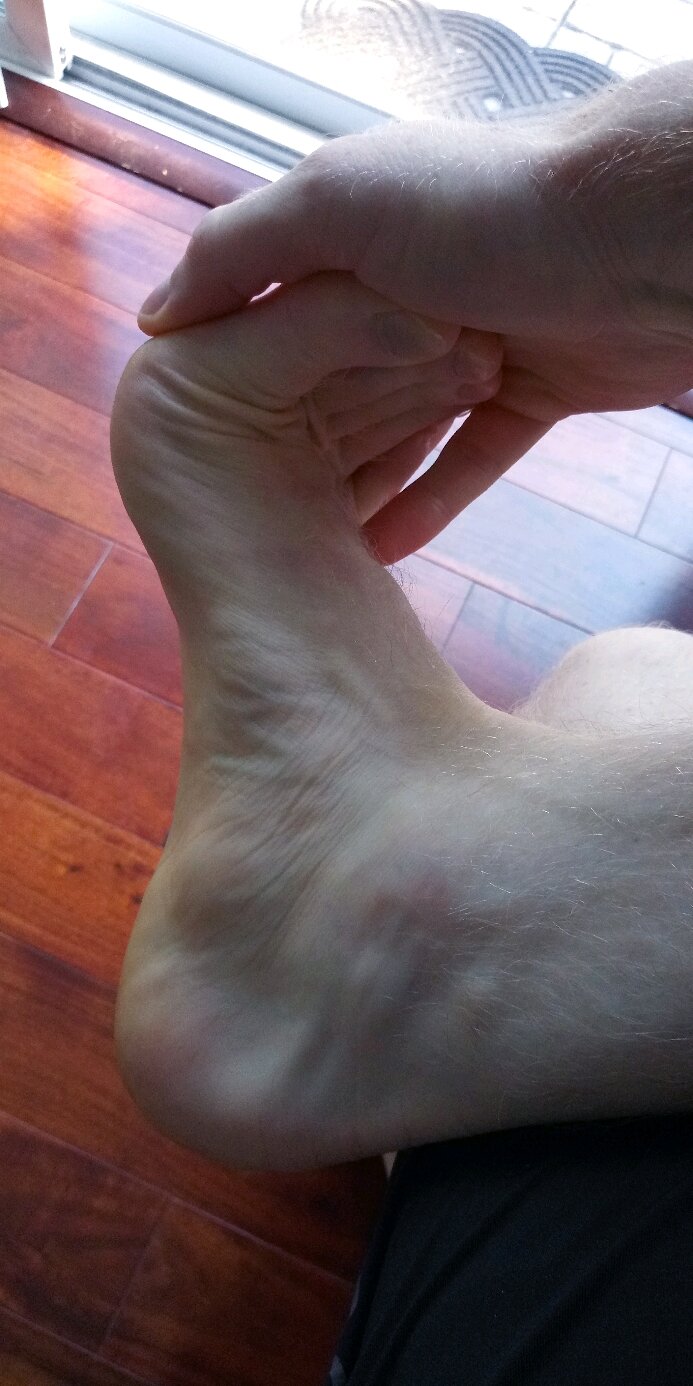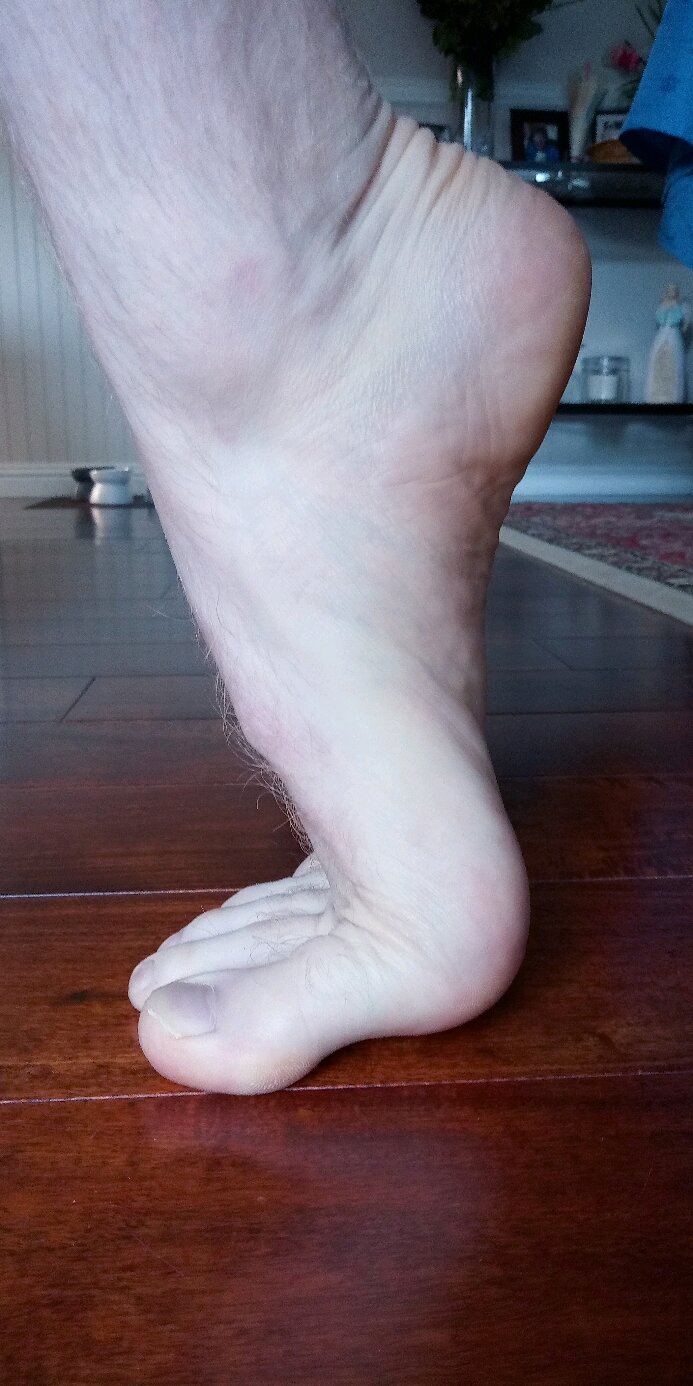5 Strategies to Reclaim Your Natural Foot
Updated: 1/16/25
Essential Points:
Go Barefoot for Foot Health: Walking barefoot on a variety of surfaces reactivates sensory receptors and strengthens foot muscles, promoting better balance and natural function. The more time you spend barefoot, the more your feet will regain their natural strength and flexibility.
Exercise and Mobilize the Foot Muscles: Targeted exercises like toe yoga, short foot, and balance training help activate the intrinsic muscles of the feet, improving strength and mobility. Regular stretching and joint mobilization are key to restoring foot function.
Choose the Right Footwear and Transition Gradually: Opt for shoes with a wide toe box, flexibility, and zero heel drop to support natural foot movement. Transition to minimalist shoes slowly to avoid injury, and treat your feet like any other body part by gradually increasing their strength and activity levels.
Articles in this 3-Part Series:
5 Strategies to Reclaim Your Natural Foot
Today we will be finishing the three-part foot series with an article all about reclaiming your natural foot. Although the reasons our feet have become weak and injury prone are vast and varied, the treatment for such disorders are quite simple. I believe there are five main ways we can bring our feet back to their functionally strong natural state including:
Go Barefoot Often
Exercise the Foot Intrinsic Muscles
Improve Foot Flexibility and Alignment
Pick the Right Shoes
Treat the Foot Like Any Other Body Part
If those five concepts are followed, I full heartedly believe the majority of foot aches, pains, and issues could be solved. Let’s dive right into them!
1. Go Barefoot Often
In physical therapy school my professors always touted two important concepts and sayings to us, the students. The first one, “It Depends”, referring to the individuality of all patients and their injuries. The second, “AMAP, ANAP”, which means, “As much as possible, as normal as possible”.
When it comes to feet, I really think about this second concept a lot. Although shoes are mainstay in our culture, they are not inherently normal from a physiology standpoint. No one came out of the womb with Nikes on. Yet, medical professionals will often try to correct foot problems with shoes or inserts. Why not just treat the foot like a foot instead? Perhaps have a patient or client go barefoot? It is the physiological normal way of living after all is it not? Having a person go barefoot more often has two main advantages.
The first advantage is that the hot bed of sensory receptors in the foot get fully engaged. Often these sensory receptors get to react to a limited amount of textures and sensations daily. Most often the only sensations a modern foot will get on a regular basis are the inside of a sock, the insole of a shoe, carpet, hardwood floor, and maybe concrete. Rarely does a modern foot get daily doses of grass, rocks, wind, and hot/cold through the ground. I often wonder how this deprivation of sensation over many decades alters our brain and its connection to our foot. I would imagine quite a lot, and for the worse I am afraid. With focused barefoot time these sensory receptors reactivate and become finely tuned allowing a better connection with bodily motion and thus better balance.
The second advantage is the passive strengthening of foot musculature. Just the act of walking barefoot over multiple surfaces fully engages the intrinsic musculature of the foot without intentional corrective exercises. The more variety in surfaces, the more variety in muscular activation. It is surprising how strong and robust the foot becomes just by allowing it to work naturally outside the constraints of a shoe.
2. Exercise the Foot Intrinsic Muscles
Although the intrinsic musculature of the foot gets worked just by walking barefoot, sometimes we need a more targeted approach for faster gains and normalization. This is where targeted exercises come in. For all around muscular activation I would recommend three different exercises: toe yoga, short foot, and generalized balance training barefoot.
Toe yoga is a fancy way of say moving the big and little toes independently. Most people who chronically wear shoes will find this extremely difficult if not impossible due to the quasi-inert nerve pathways that allow differentiation of the toe muscles. See an awesome video below by Align and Restore on how to properly perform this exercise. I promise you, you will get frustrated, but it is worth the effort. This is an area of foot health I am constantly trying to get better at myself.
The short foot exercise is a wonderful way to work on the medial arch of the foot and can help bulletproof it against plantar fasciitis. At its core it is all about raising the medial arch of the foot by bringing the first metatarsal head and heel closer together. Again, this foot exercise may be frustrating at first, but mastery of it will come quickly. Check out this video by Track Active below to see what the exercise looks like.
Balance training is a full-on foot burner if done correctly. I remember when I started parkour about 5 years ago, I was riddled with chronic plantar fasciitis and achilles tendinopathy. I honestly attribute most of my recovery to my incessant desire to work on rail balancing. The entire foot and ankle complex get worked maximally, not to mention the hip and leg strength improvements. Now, I do not normally recommend patients start off with balancing on a rail necessarily, but it is a fun challenge and The Foot Collective has some sleek looking low rails here (I am not affiliated with TFC, just really like what they do). Starting with simple feet together, semi-tandem, tandem, or single leg balance variations works just as well. Any balance variation where your client wobbles a little bit is the best place to start. To create adaptation we need challenge, so do not be afraid to push the variations. It is also important to always have your patient perform balance exercises barefoot, even if they have some form of neuropathy. We want to allow as much sensory feedback and muscle activation as possible for maximal benefit.
I like to play a game I call Balance Golf with my patients. In this game the patient picks a position that is difficult to hold for 30-60s. We then pick a time for 3 sets. For example, 3 sets x 45 seconds. We then do a round on each foot (6 rounds total) and count how many times they need to touch down. As in golf, lower scores are better. The goal is to eventually get to 3 sets x 60 seconds with zero touches throughout all 6 rounds. You will be amazed how engaging this is for patients. I have even had a husband and wife pair turn it into a competitive pastime.
3. Improve Foot Flexibility and Alignment
After years of being in a shoe, feet often look more like the shape of a shoe than an actual foot. It is important to get this natural foot shape back, as well as loosen up all the glued down joints. Four easy and non-time-consuming ways to do this include: toe spreading, self-joint mobilization, plantar fascia stretching/toe extension, foot twisting.
Toe spreading exercises essentially combat the squeezing of toes in most modern shoes. Toe spreading can be as passive or involved as you like. Personally, I prefer passively spreading my toes with toe spreaders. I use spreaders similar to these. These toe spreaders are cheap, low profile for walking or shoe wearing, and effective. It is important to note that if your client chooses to wear toe spreaders in shoes, they should have a wide toe box for the toes to splay naturally such as in Lems or Xero shoes. I prefer to wear mine at night as I sleep to reduce interference with my daily activities. Be aware that the first few times a client wears these they will be sore. Eventually, as the foot tissues lengthen, toe spreaders can be worn for hours at a time. If your client prefers not to spend money, using your fingers as spreaders works just as well but is much more involved and requires focused time to perform.
Toe spreaders are extremely useful for re-creating lost toe splay.
Self-mobilization of the foot is simple and effective. To perform this technique, one simply needs a ball shaped object, I personally prefer a lacrosse ball. Lacrosse balls are, in my opinion, the perfect size and density. Using this ball, you roll up and down your foot with increasing pressure as tolerated. The goal is to perform forward/backward rolls for 1 min, then side-to-side rolls for 1 min on each foot. This activity can be performed multiple times per day if desired and is best in the morning or before physical activity. When done consistently, over time the foot will become less sensitive and more mobile.
Self-mobilization with a lacrosse ball helps free up stiff joints in the foot.
Plantar fascia and toe extension stretches are simple and can be integrated into a daily routine without much hassle. A simple plantar fascia stretch (as seen in the first picture), in the morning before someone’s first steps, primes the foot for activity and reduces strain on the passive structures of the arch. Working on toe extension (second picture) can improve gait mechanics and prevent excessive out-toeing gait if limited by big toe mobility. You can see a few examples of toe extension stretches below, but anything that uses full range of movement in the toes will work wonderfully.
Lastly, simply working on twisting the foot can improve overall mobility. Often, we think of the foot as simply a sagittal plane mover, but in reality it is meant to move in all planes. Twisting the foot with our hands gently, almost like wringing out a wet rag, frees up more adaptive mobility in our foot. Essentially, we are performing torsion of the foot that leads to increased rearfoot and forefoot inversion/eversion ability. Increased mobility of the foot, when combined with increased strength, is a recipe for healthy adaptable feet.
4. Pick the Right Shoes
As we discussed last week, a lot of our current foot problems can be traced back to the footwear we choose. Although going barefoot is a powerful way to restore our feet, sometimes we just cannot get away from wearing shoes. For this reason, it is important that we all know what a truly good shoe looks like. For simplicity, the best kinds of shoes are the ones that best match the function of the foot. This means that a good shoe at its core has three main attributes: wide toe box, flexibility, and limited to no heel rise (zero drop). In the following examples I show the first barefoot style shoe I purchased (Whitins), and the benefits this type of show supplies.
A wide toe box allows our toes to splay out naturally. When we allow a natural toe splay, we prevent the common issues of toe rubbing, bunion formation, and toe misalignment. Additionally, we can wear toe spreaders inside of these shoes without issue. Always stack habits when possible for optimal results.
A wide toe box gives enough room for full toe splay, even in toe spreaders.
A flexible shoe is a mobile shoe. When the foot is trained to be strong and resilient on its own, we no longer need the artificial supports of a modern shoe. As I said earlier, we want to use the foot as normally as possible, as much as possible. A flexible shoe is relatively nonrestrictive and allows the foot to continue working at max capacity. When buying shoes, try folding them up or curling them into a ball. Is it stiff and overly supportive? Or is it more like a glove that can be molded at will? If it is more like a glove you are headed in the right direction.
The same shoes from above curled into a ball.
Zero drop shoes are essentially shoes with no heel rise. Whether we think it or not, most shoes today have a raised heel. The reason for this is often to increase the cushioning at the heel for comfort. Although walking on pillows feels great, it is not the optimal way to live. We lose connectivity with the ground due to this cushioning. Additionally, having a heel rise creates a shorter achilles tendon leading to less flexibility in the ankle complex overtime. Once barefoot, we end up feeling tighter than usual because we are no longer standing on wedges. Overall, wearing zero drop shoes allows us to feel the ground, increase ankle mobility, and soften our foot strikes for optimal gait mechanics.
These shoes have a slim profile and currently no shoe insert for a true zero drop experience.
5. Treat the Foot Like Any Other Body Part
Out of all these tips, I think this is the most important one. Too often I see people state that transitioning to more barefoot activities or minimalist shoes results in injury. To these naysayer’s credit, they are partially right. Many injuries can come from making these transitions, but usually due to a very specific reason. People think that their feet are prepared for these activities. I am telling you now, they are not. The average person’s feet are weak and fragile.
If we think about it, feet are just like any other body part. Feet need to be trained gradually into more and more activity. If Joe Smith decides to transition from wearing a standard shoe to a zero-drop shoe abruptly, his foot will be over trained and become injured. Instead Joe should switch between the shoes for several months, gradually building up time in the less restrictive shoes with more intense activities. Eventually, he will build up his foot strength just like a powerlifter builds up their squat strength. The most important thing to remember is the foot takes time to build back up, but with consistency and progressive loading it can and will become an optimally functional foot.
Final Thoughts
Reclaiming the strength and natural functionality of your feet is not only possible but also surprisingly simple with the right habits and practices. From spending more time barefoot to incorporating targeted exercises, improving foot flexibility and alignment, and selecting the right footwear, each step brings you closer to healthier, more resilient feet. Modern life may have challenged the natural strength of our feet, but with consistent effort and mindful choices, we can restore their full potential. Remember, your feet are the foundation of your movement and balance—treating them with care and intention can enhance your overall health and wellbeing. So why not start today? Take off your shoes, spread your toes, and begin the journey toward reclaiming your natural foot!
Thank you for reading the article! I would love to hear your thoughts below in the comments. What kind of foot exercises do you like? Have you used any of these strategies before? How do you think we should go about optimizing our patient/client’s feet through therapy?
If you want to get some awesome natural footwear that can help you reclaim your naturally strong foot check out Earth Runners, Lems Shoes, and Xero Shoes.
Happy falling!










